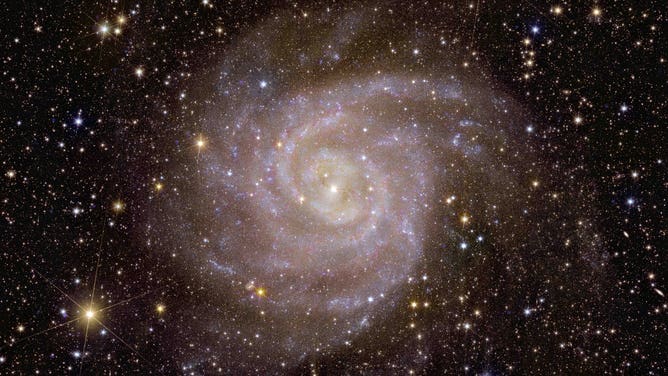ESA mulls high-risk, high-reward plan to fix blurred vision on Euclid’s gaze into dark Universe
Scientists noticed Euclid was seeing a decline in the luminosity of stars and realized the issue was with the the spacecraft. ESA teams have a de-icing plan to save the spacecraft's sensitive optical instrument but could end up changing its alignment instead.
Euclid telescope's first color images show dazzling edge of darkness
The European Space Agency released the first full-color images taken by the Euclid telescope, a new spacecraft designed to study dark matter. (Video credit: ESA/Euclid/Euclid Consortium/NASA, image processing by J.-C. Cuillandre (CEA Paris-Saclay), G. Anselmi)
Engineering teams across Europe are working against time to de-ice the Euclid spacecraft nearly 1 million miles away from Earth in an attempt to restore the spacecraft's optical instrument and continue the hunt for the cause of the Universe's expansion.
The European Space Agency's Euclid spacecraft launched in July from Florida to create a 3D map of the Universe and seek out the origin of the accelerating expansion known as dark energy. However, months into the mission, scientists noticed the spacecraft had blurred vision.
Euclid has two instruments: a visible-wavelength camera known as the VISible instrument (VIS) and the Near-Infrared Spectrometer and Photometer, known as NISP. Project scientists realized the issue when the spacecraft saw a decline in luminosity in some stars observed through the VIS.
TELESCOPE USED TO STUDY MYSTERIES OF THE UNIVERSE RELEASES FIRST IMAGES IN STUNNING DETAIL
"Some stars in the Universe vary in their luminosity, but the majority are stable for many millions of years. So, when our instruments detected a faint, gradual decline in photons coming in, we knew it wasn’t them – it was us," said Mischa Schirmer, calibration scientist for the Euclid consortium and one of the main designers of the new de-icing plan.

Euclid telescope view of spiral galaxy IC 342. (Image: ESA)
(ESA)
Teams determined that a few to a few tens of nanometers of ice was likely frozen on Euclid’s optical system, essentially its eyes. ESA says this layer is about the equivalent of the width of a strand of DNA. Still, even a tiny amount of ice can impact a sensitive optical system that is required to investigate dark matter and dark energy.
According to ESA, water ice freezing in the cold of space is common as water absorbed from the air during assembly on Earth gradually begins releasing from the spacecraft in orbit. However, those water molecules stick to the first surface they find, which is bad for Euclid's highly sensitive optical instrument.
HOW DOES DE-ICING WORK? INSIDE UNITED AIRLINES’ WINTER OPERATIONS AT ITS LARGEST HUB
A collaborative response team has created a high-risk, high-reward plan to de-ice the spacecraft in orbit more than 1 million miles from Earth. They plan to use the onboard heaters to slowly increase the temperature of some parts of the spacecraft, beginning with the mirrors, to stop the ice accumulation. Teams at mission control could heat the entire spacecraft. However, this could change the state of Euclid’s optical alignment.

A photo taken on June 27, 2023 shows the last glimpse of ESA’s Euclid space telescope before it was encapsulated by a SpaceX Falcon 9 rocket fairing. (Image: SpaceX/ESA)
(SpaceX)
"To fulfill Euclid’s scientific goals of making a 3D map of the Universe by observing billions of galaxies out to 10 billion light-years, across more than a third of the sky, means we have to keep the mission incredibly stable – and that includes its temperature. Switching on the heaters in the payload module, therefore needs to be done with extreme care," ESA’s Euclid Flight Director Andreas Rudolph said.
After individually heating the mirrors, the team will check if the loss of light persists and then warm up other groups of Euclid mirrors, checking each time to see what percentage of photons they see.
The clock is ticking because Euclid only has six years to complete its survey.
